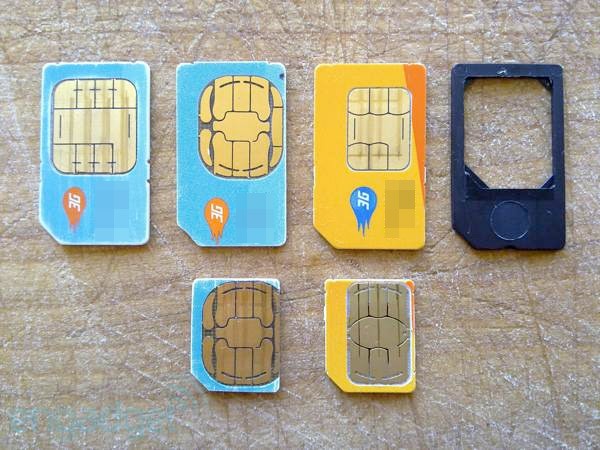If you own an iPhone 5, whether you know it or not, you’re already a user of the new Nano SIM card modules. Apple is known for being a technological pioneer, and it was the first manufacturer that brought us the previous generation Micro SIM cards, which all major phone manufacturers have now adopted as a mainstream standard.
The Basics
SIM stands for subscriber identity (or identification) module. It is an integrated circuit that stores the identity and related key of the user, in a secure way used to authenticate subscribers on mobile telephony devices.

A SIM card embeds a SIM in a removable plastic and metal strip, used to identify the mobile subscriber to the network without which the device is useless. The original SIM card was made the same size as credit cards (85.60 mm x 53.98 mm x 0.76 mm) and was never widely used. Technically speaking, the SIM cards we come to know and use ubiquitously is the Mini SIM card, having the same thickness as a full-size (credit card) SIM but reduced length and width measurements down to 25 mm x 15 mm.
Apple’s Shrunken SIM Cards
With the release of the iPhone 4 on 24 June 2010 preceded by the iPad 3G on 30 April 2010, Apple was the first mainstream manufacturer that unleashed the Micro SIM card standard to the world. Designed to be backwards compatible with Mini SIM cards and the original SIMs, the Micro SIM card measures a measly 15mm x 12 mm x 0.76 mm.
Although Apple has forever been associated with new SIM card standards, it is only a manufacturer and not a standards body that really launched the new SIMs. The credit for this goes to the European Telecommunications Standards Institute (ETSI), along with a cross industry consortia who proposed the Micro SIM way back in December 1998, with final acceptance and ratification by late 2003.
Why is it Shrinking?
ETSI foresaw the ever increasing need for miniaturisation of mobile telephony device components, and the Micro SIM was designed “for the purpose of fitting into devices otherwise too small for a Mini SIM card”. This same rationale was carried forward to the present day with the arrival of Nano SIMs in the iPhone 5.
Measuring a miniscule 12.3 mm x 8.8 mm x 0.67 mm, the new Nano SIM cards are 44% smaller than existing Micro SIM card sizes. Its thickness has also been reduced by about 15%, but doesn’t seem to affect backwards compatibility with Micro and Mini SIM card devices, provided a suitable adapter/holder is used.
Whatever went on behind the scenes with Apple influencing and lobbying ETSI, the new Nano SIM standard was ratified and introduced in early 2012. Finding additional space within mobile devices was the primary driver for Apple, and other manufacturers following in its tracks, as adding more battery power or new radios can be made that much easier and facilitated with ease by reducing the space taken up by sim cards and associated slots.
Apple, as ever, have stolen a lead on other manufacturers with the Nano SIM card standard. The new iPhone 5 manages to get better battery life than its predecessor, despite having a larger screen and a power hungry LTE (4G) radio built-in. This lead will only be temporary though; it won’t be long before the likes of Samsung, HTC and Nokia start adopting this new standard en mass.
References:
https://giffgaff.com/orders/
http://techcrunch.com/2012/09/
http://en.wikipedia.org/wiki/
http://asia.cnet.com/hacked-
http://www.amazon.co.uk/s/ref=